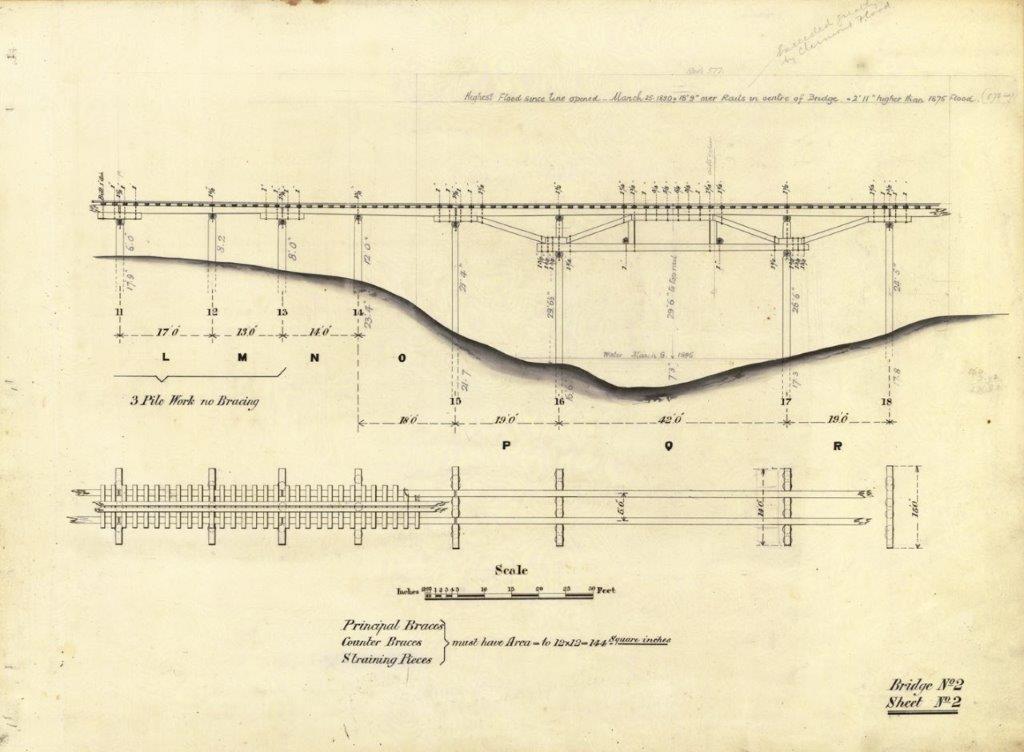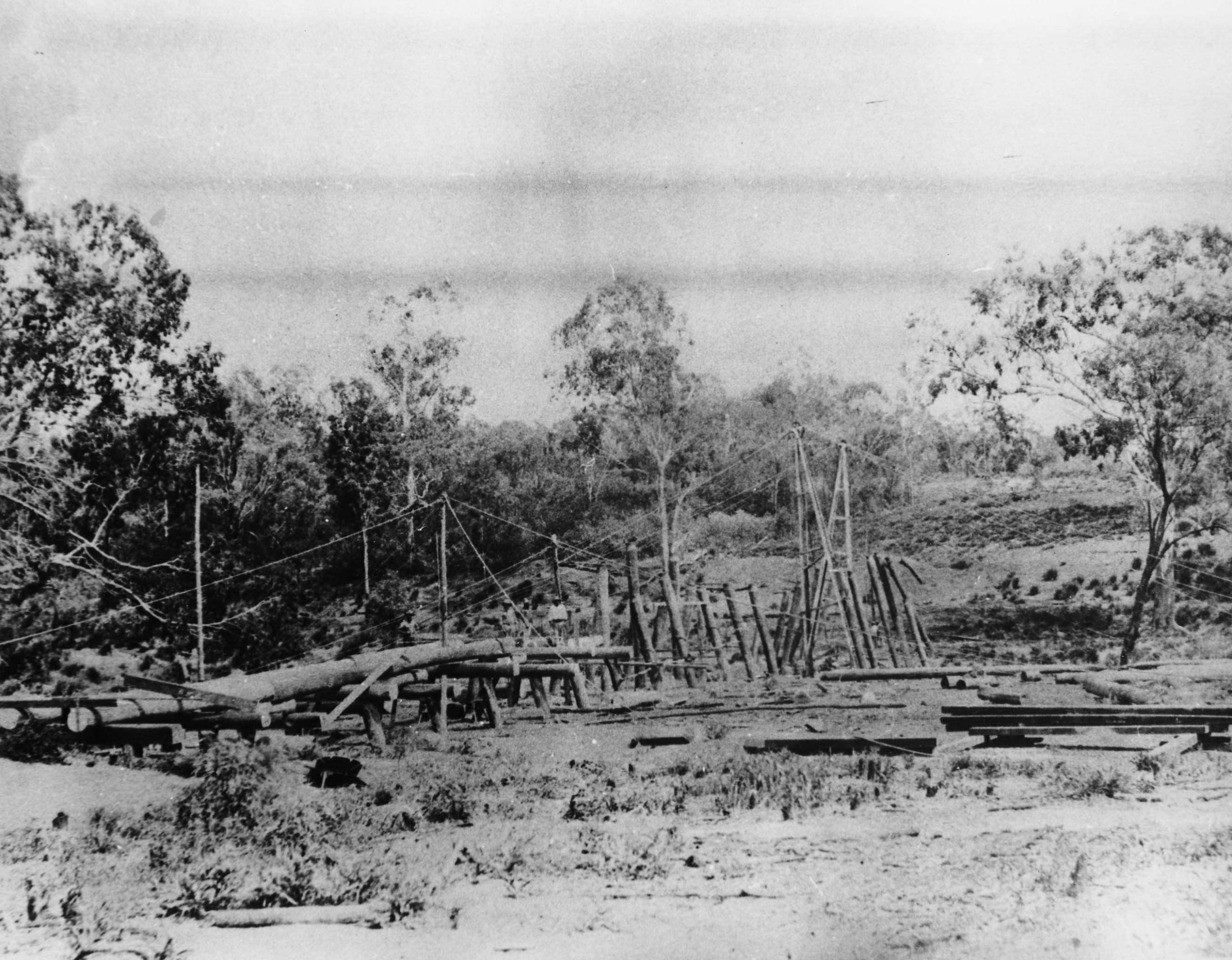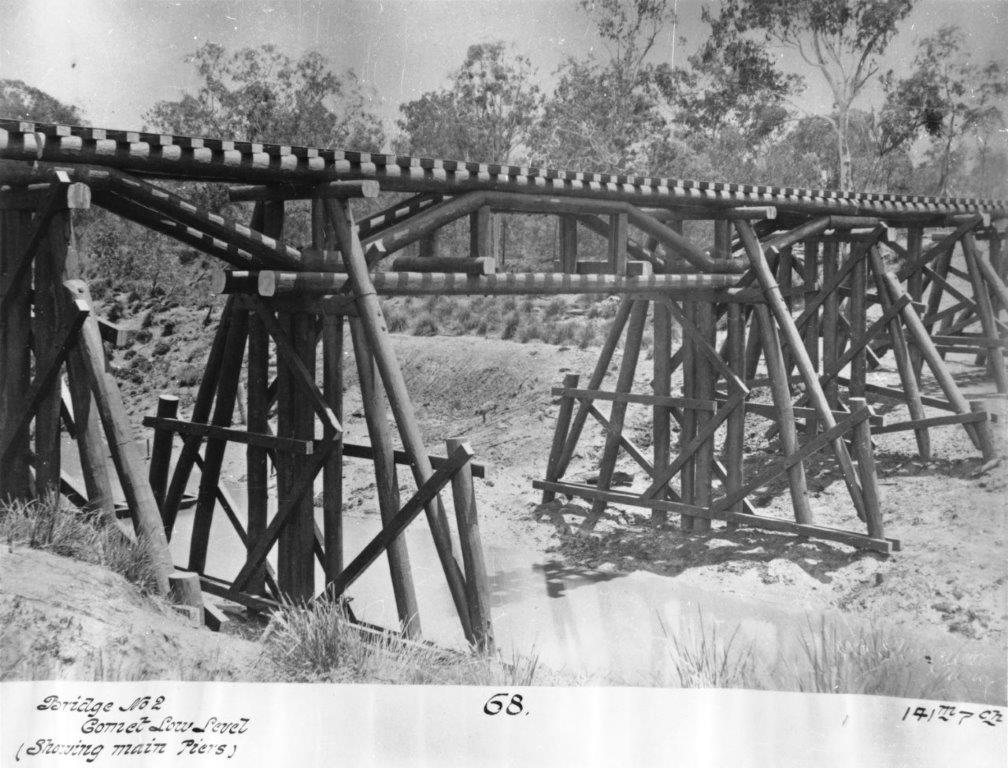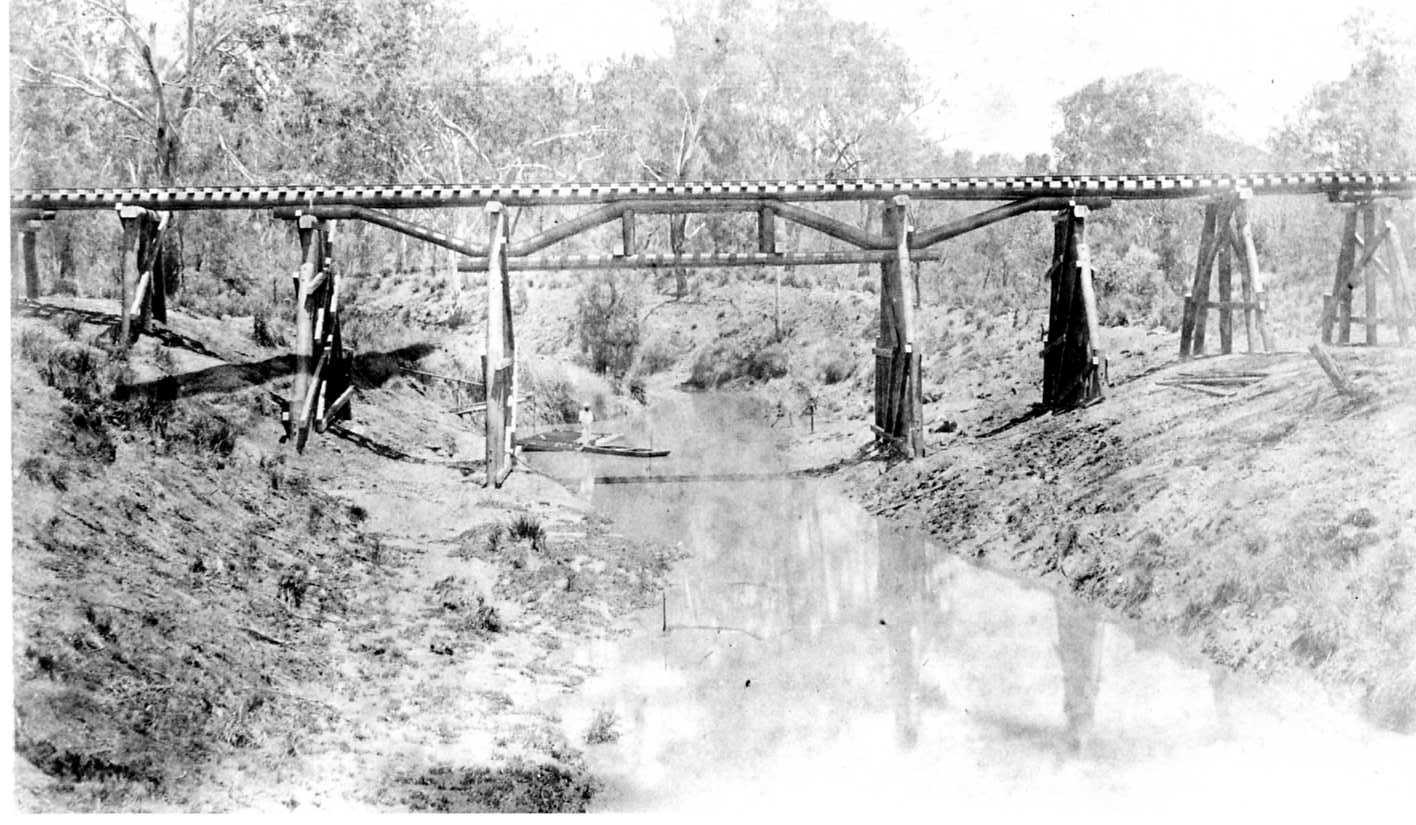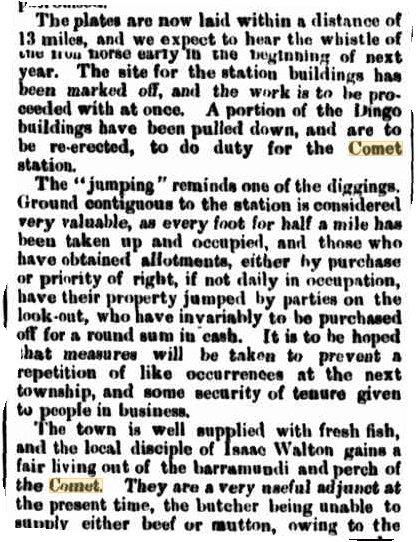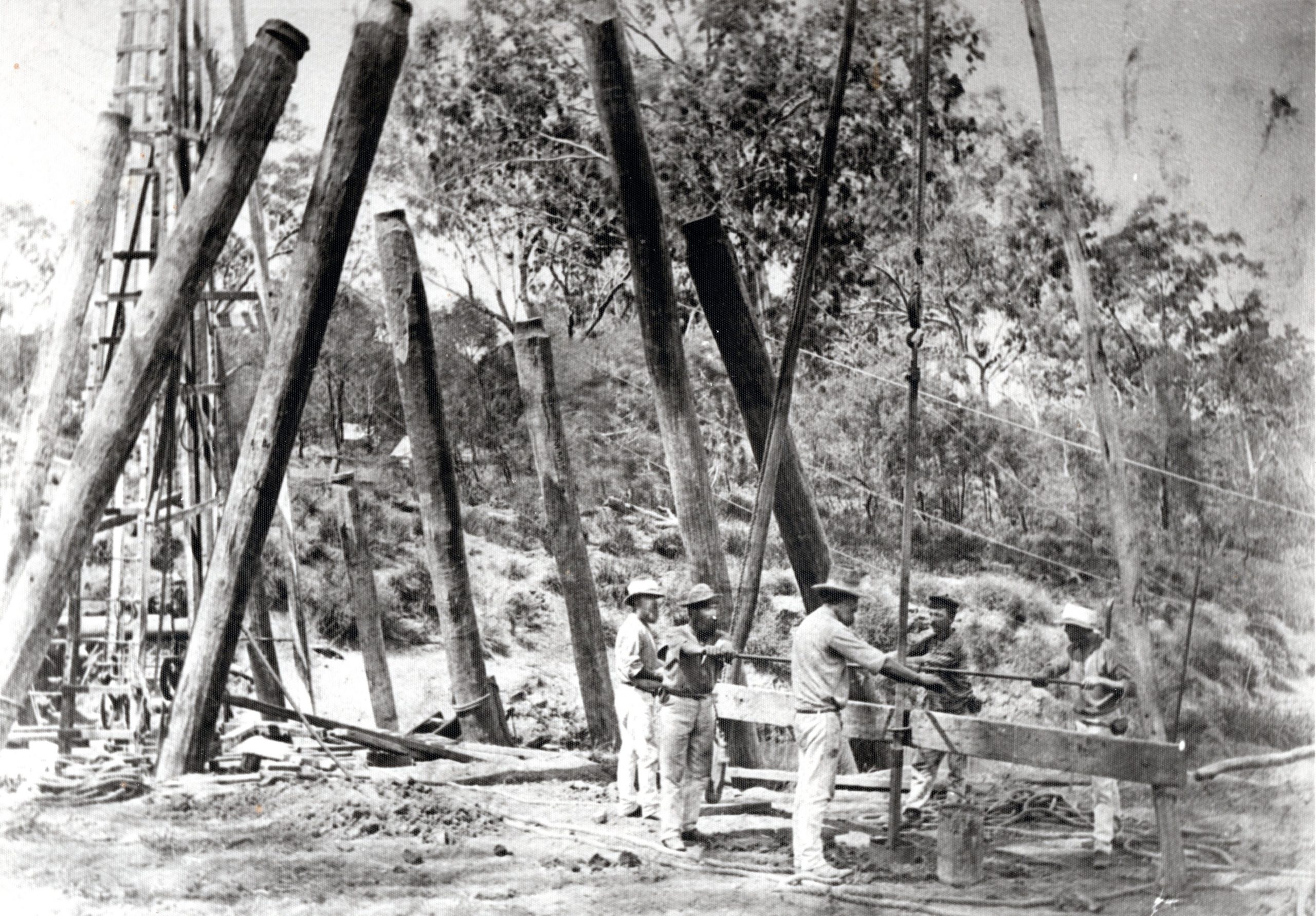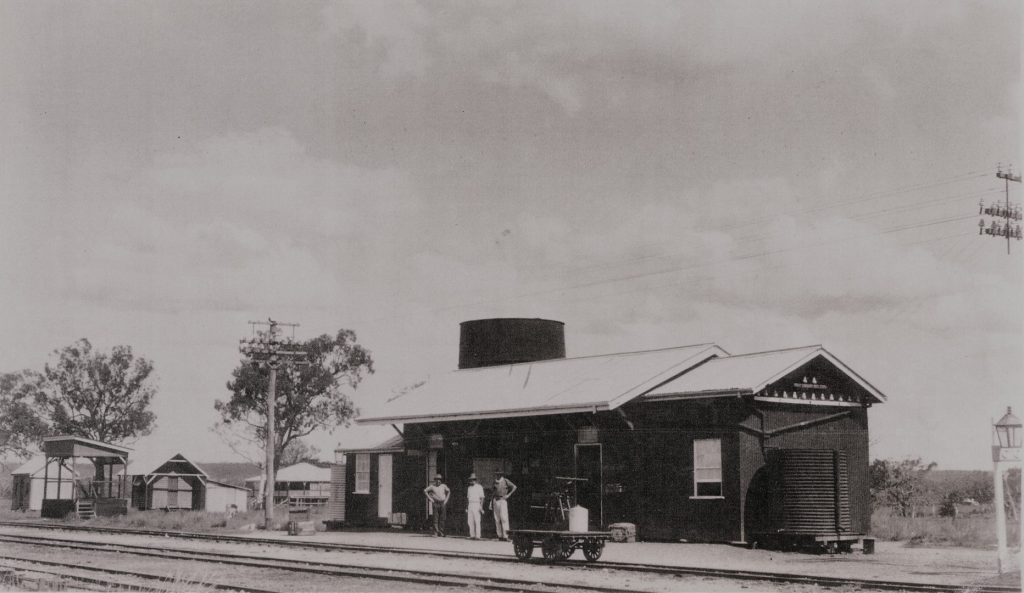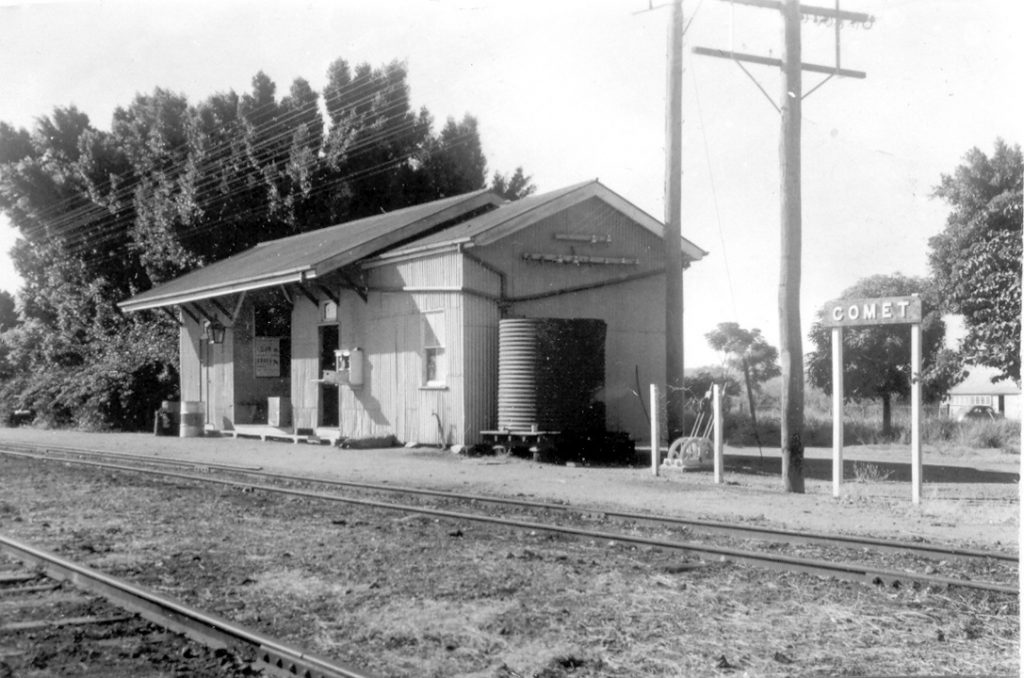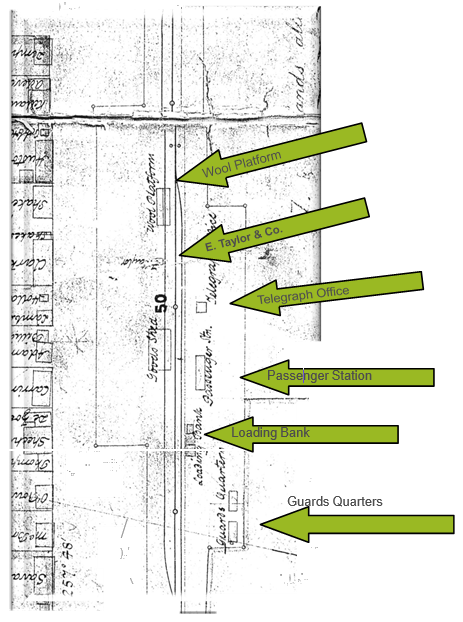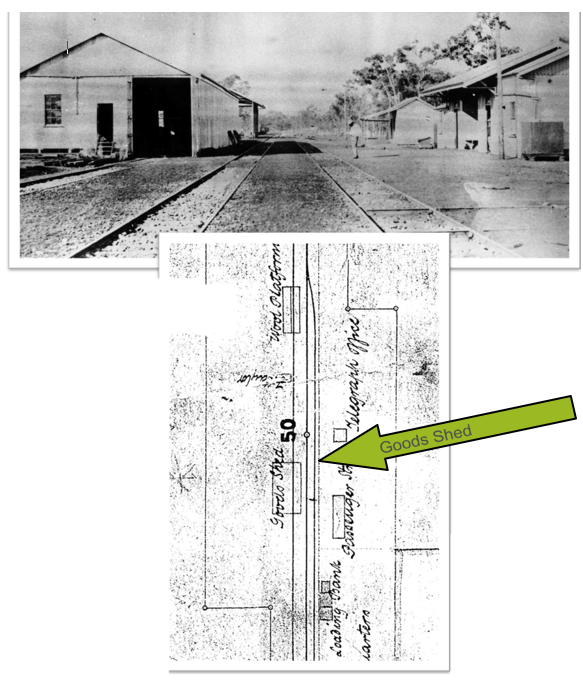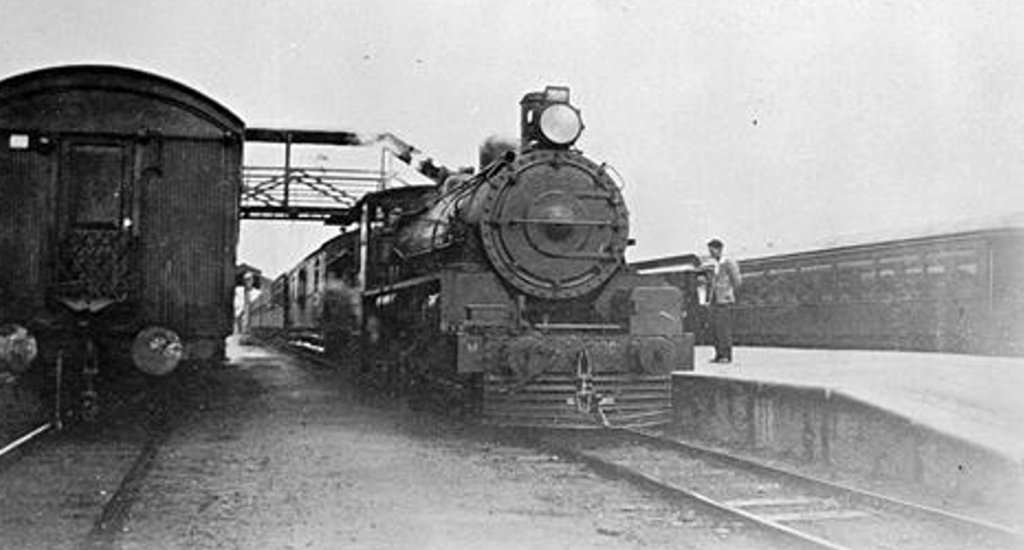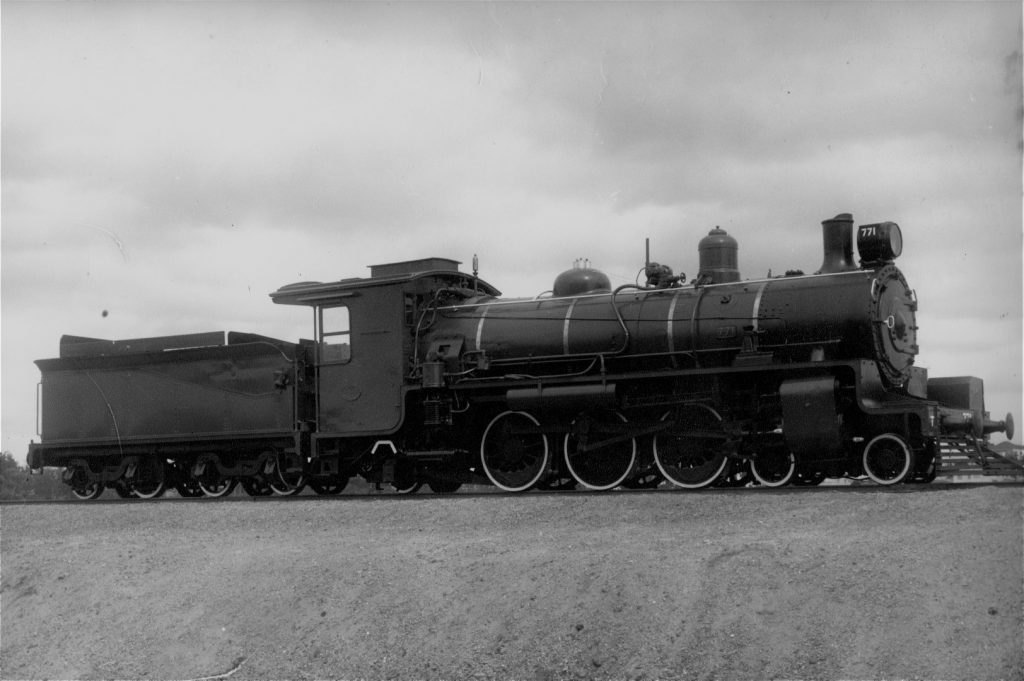Site 5

ROBERT BALLARD ENTERS THE STORY
This short line was of little use to western businesses and graziers, so the government engaged Robert Ballard to extend the rail line from Westward to Longreach. Ballard was very experienced in railroad construction, having built the very difficult Ipswich to Toowoomba line in Queensland.
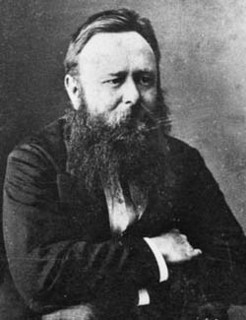
Birth: 28 March 1839. Ledbury, Herefordshire, England
Death: 12 November 1912. London, Middlesex, England
Cultural Heritage: English
Occupation: mining engineer, public servant, rail/tramways engineer
Source: Australian Dictionary of Biography
Ballard knew his own worth and demanded the title of Engineer in Chief. He also demanded that he did his own hiring and firing if he was to accept this contract.
Using local timbers in construction, he planned to build the line as cheaply as possible. Construction work to the west commenced in January 1873.
RAIL TERMINUS
Forward railway workers and their families were reported as being in Cometville as early as October 1877.
The town became the rail terminus from 1st March 1878 until 19th May 1879. The building of the three bridges over the Comet River and its two anabranches saw workers and their families make their homes in Cometville.
FIRST RAILWAY STATION
According to John Kerr’s railway notes, the first railway station was a portion of the Dingo station building, which was relocated to Cometville. Another portion was added in later years to provide a waiting room and a storeroom.
Two large wool receiving stores were in the large railway yard. The shed, built by Fox and Tag, measured 39.624m by 9.20m (130ft by 30ft) and was at the eastern end of railway station. The Rockhampton Morning Bulletin dated 9th August 1878 reported that Mr R Holyoak was the contracted builder.
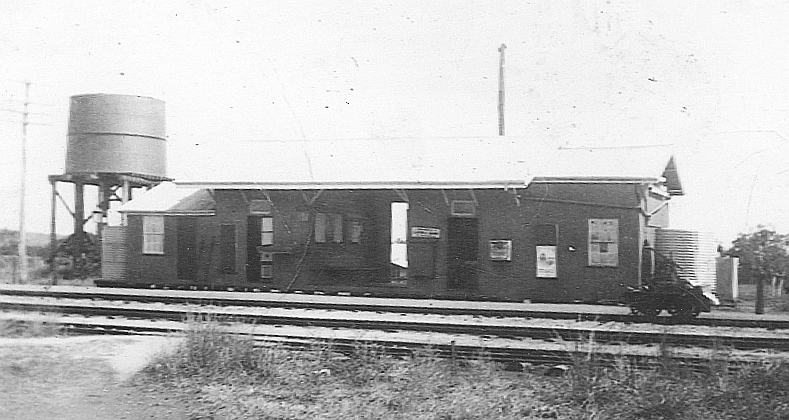
THE BULLOCK AND HORSE TEAMS BRING IN WOOL
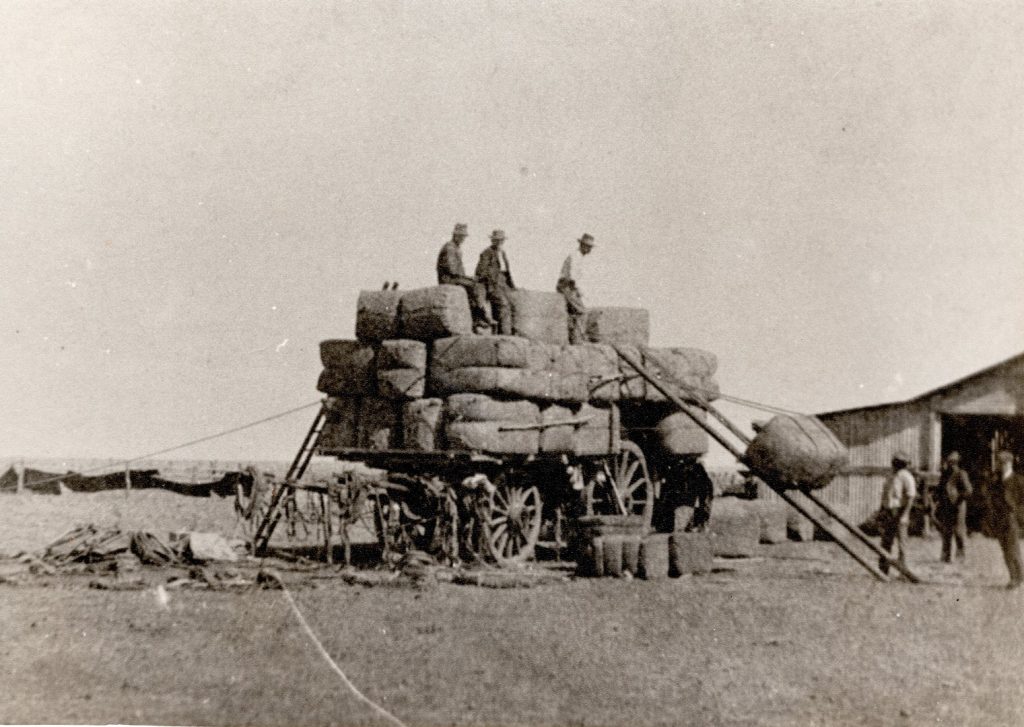
At this time, Cometville had up to 100 bullock and horse teams carting in wool to be trucked out by rail.
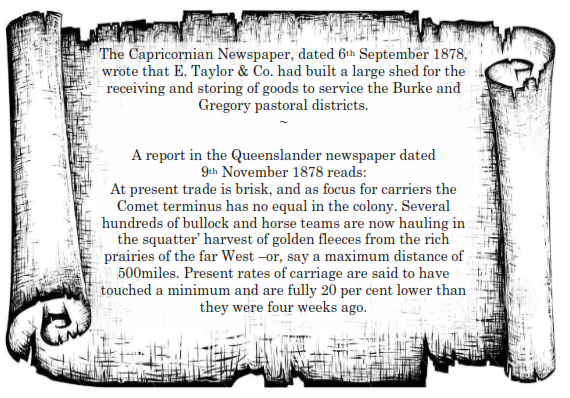
The Princes of carrying firms to the west were Messrs. Christian and Rivers, who owned and worked eighty teams. They had over £40,000 ($80,000) capital invested in their carrying business.
This firm also carried copper from Copperfield to be trucked out of Cometville. Previously the copper had been carted to the port at St Lawrence for shipment.
Along with the station buildings it would have been quite an impressive sight. A daily train travelled to Rockhampton and back bringing mail and the necessities of life.

TRAGEDY STRIKES
The Capricornian news, dated 6th November 1878, reported a tragic accident which occurred one afternoon as thirty workers travelling on a ballast train were crossing a bridge just west of the town.
A derrick working on the permanent bridge over a gully was lifting timbers into place, when one of the steel cables on the derrick snapped. The cable swept down wiping men off some of the wagons and tossing a boy, who was employed as a water carrier, ‘into the air like a cricket ball’. He fell onto the embankment but was not seriously injured.
One man was killed instantly. The injured were transported into town to the government store and attended to by Dr. McNeely, the railway doctor. Sadly, five of the men died. Fifteen others had various injuries and twelve were taken by train to hospital in Rockhampton, the doctor traveling with them. Another of the men died at Blackwater on the way.
Killed were:
- John Munro (Scot)
- Charles Nicholson (Dane)
- William Wilson (Scot)
- George Jorgenson (Dane)
- Scarlup (German)
The shops were closed next day; the townspeople and workers followed the funeral procession to the cemetery where Mr. Ballard read the solemn burial service of the Church of England over the five men.
John Munro was the only married man. A relief fund was set up to help the injured and the family of John Munro.
An enquiry found negligence on the part of the bridge contractor, Henry Dodd, and he was committed to trial. The gully where the accident occurred is known locally as Murdering Gully.
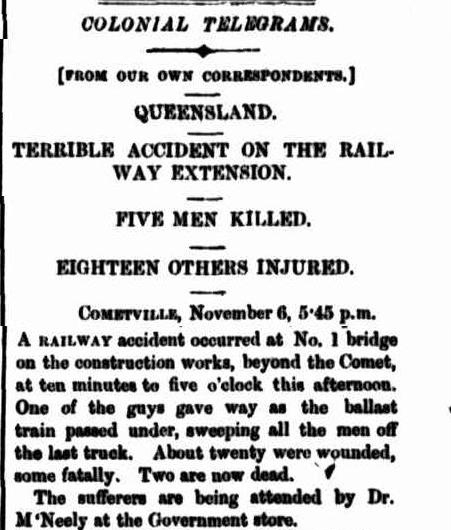
WATER FOR THE STEAM ENGINES
Water for the steam engines was drawn from a well hole in the Comet River west of the town and delivered by a steam pump into tanks beside the rail line. This arrangement continued until the Railway Department built a weir on the Comet river in 1915. The water was then lifted and pumped to a 136,382 litre (30,000-gallon) steel tank situated at the rear of the railway station. According to Greg Hallam, Railway Historian, the railway station was known as Comet Tank between the years 1913 – 1916. This tank was sold later to Mr J W McKenzie of Rhudanna, Comet.

Water hydrants were situated at either end of the station yard enabling steam locomotives to take on water. Engines required water about every 60km.
The first of the BB eighteen and quarter class steam engines were manufac- tured in England by the Vulcan Foundry in Warrington. The second contract saw the engines built by Walkers Ltd. in Maryborough, Queensland. These engines were used extensively on the central line and took on some 15,910 litres (3,500 gallons) of water. Later, Bayer Garratt engines were used which could haul much heavier loads and had a huge capacity of 17,280 litres (3,800 gallons) of water.
DUTIES OF THE STATION MASTER
In 1878, the building housing the post and telegraph office was situated in the railway yard. In much later years, it was the duty of the Station Master to look after all postal and telegraph matters until March 1961, when all postal business was relocated to the new post office in town.
For many years, the telephone exchange was situated in the station. Phone calls could only be made at certain hours through the day when the Station Master was on duty. Mailboxes lined one wall of the building and against the rear was a coal fired potbellied stove to boil a kettle or to heat the room on cold winter nights.

THE IMPORTANCE OF PARCEL SCALES
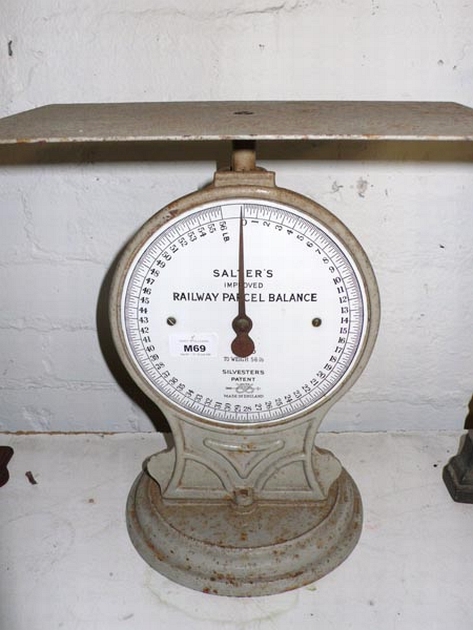
As a mother at this time, I found the parcel scales in the railway station were very useful to weigh my baby to see how she was doing weight wise, as it was a long way to the nearest baby clinic in Emerald. I’m sure that the station master was as interested as I was in my baby’s health.
THE MIDLANDER
The old Longreach Mail passenger train became a thing of the past when the airconditioned Midlander began service in May 1954. Initially it was drawn by two steam engines until the advent of diesel locomotives. Not having to stop to take on water made for a shorter travelling time.
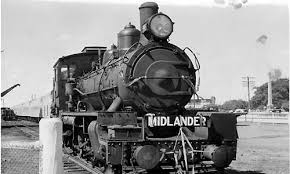
COMET IN THE 1950s
When I came to Comet there were two main trains during the day. These were 10up; a steam train which brought the mail and daily newspapers from Rockhampton, bread and meat from the bakery and butcher, C.J. Ohl, in Bluff, along with goods to go out to the stations. This train left Rockhampton at 6am and arrived in Comet about 5pm. The second train was 49 down. The school children from up the line towards Emerald travelled on this train to school at Comet. On the occasion that 10up was delayed taking the children home, the station master would permit the children to travel on any other train available. This could have been a cattle or a coal train. All trains had a guards van at the rear. What a long day for these school children.
Most of the townspeople were there to meet the train to collect their newspapers, bread and meat. Any meat not collected was placed in a tin tray suspended from the roof in the station waiting room away from the town dogs.
An excerpt from a personal letter reads – ‘Our fresh fruit and vegetable came from PCD in Rockhampton – and always on 10 up. Should we need extra supplies, we could always ring Emerald for goods to come on 49 down. As the phone system was housed at the Railway Station, we always had to be mindful that we couldn’t get a call through whilst a train was at the station’.
SCHOOL CHILDREN
The morning train 49 down brought children to school at Comet from Yamala, 20km up the line. These children would go home on 10 up. It was a very long day for the younger ones.
SPIRIT OF THE OUTBACK
Steam engines ceased to run in the late 1960s. Diesel engines made much better time and could haul larger tonnages. The modern and very comfortable Spirit of the Outback began running from Brisbane to Longreach in 1998.
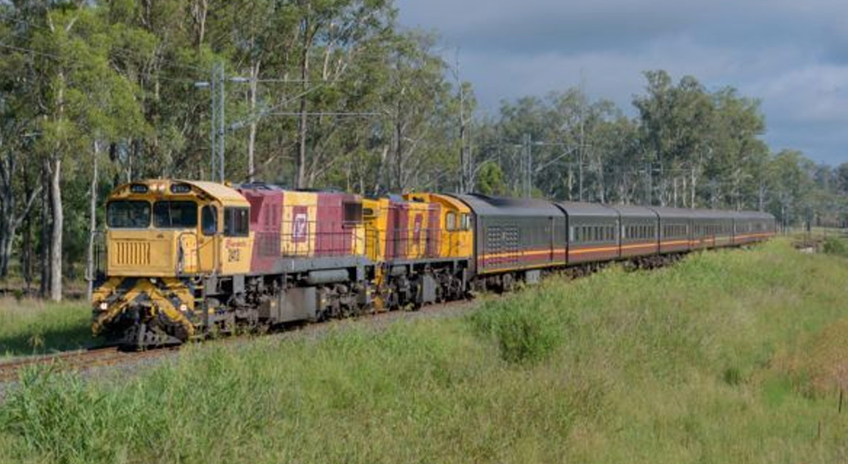
A NEW RAILWAY STATION
The relocation of another railway station situated on the highway side of the rail line saw the old building, which had come up the line from Dingo all those years ago, dismantled in 1980 and sold off to local farmers.
– Compiled by Rosemary McLeod, 2017.
– Acknowledgements: Greg Hallam, Railway Historian; Elaine Reid; Jean Carrington; Margaret McLeod; Lloyd Hanrahan; Ernest Slatter.
– Photos: National Library of Australia; State Library of Queensland; Queensland Rail; Rosemary McLeod collection; Trevor Kemp collection; Robyn Morawitz Collection.
– Contact: cometales@gmail.com.au



